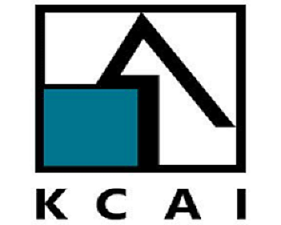10 Sep Kansas City Friends of Alvin Ailey (KCFAA) Receives $15,000 Grant from the Neighborhood Tourist Development Fund (NTDF)
Kansas City Friends of Alvin Ailey (KCFAA) has been awarded a $15,000 grant from the Neighborhood Tourist Development Fund (NTDF) to continue their mission of promoting arts education and cultural diversity through their annual Ailey II performance series. With this funding, KCFAA will bring the internationally renowned dance company to local schools and host public performances at the historic Folly Theater in downtown Kansas City. Ailey II merges the spirit and energy of the country's best dance talent with the passion and creative vision of Alvin Ailey. Through this grant, KCFAA aims to bring Ailey II, a renowned dance company, to perform at local schools and host public performances, promoting arts education and cultural diversity.05 Sep The Mosaic Life Care Foundation Receives $484,796 Grant from the Missouri Department of Economic Development Community Revitalization Grant Program, Round Two
The Mosaic Life Care Foundation has embarked on an inspiring mission to breathe new life into the Felix Street Corridor nestled in downtown St. Joseph, a community disproportionately affected by poverty and other challenges. The heart of this initiative revolves around the creation of a captivating Children's Discovery Center within a historic cultural landmark, aiming to provide an engaging platform for interactive learning and exploration.04 Sep Did You Know: The Distinction Between Logic Models and Theories of Change by Roxanne Jensen, Ed.S., GPC
Posted at 08:33h
in Competency Three, Evaluation, Logic Models, Program Design, Program Development, Roxanne Jensen, ED. SPEC.
In the realm of program planning, evaluation, and development, two widely used tools are logic models and theories of change. While both are valuable for understanding and guiding interventions, they differ significantly in their approaches and purposes. Let’s examine the main distinctions between a logic model and a theory of change by exploring their characteristics and providing practical examples to illustrate their applications.
25 Aug Preparing for a GPC Audit by Shauna O’Toole, MA, CFRE
Posted at 17:29h
in CFRE, Competency Seven, Competency Six, GPC Credential, MA, Professional Development, Professionalism, Shauna O'Toole, Strategy
I was one of the lucky 10% of aspiring GPCs (Grant Professional Certified) to see the following words float across my screen: “This email is to notify you that your packet has been selected for audit.” Audits are best practice for credentialing organizations to uphold the integrity of the credential. No matter how ethical or diligent one is, being audited is always a bit nerve-wracking. I am sharing my experience to show you how to track documentation to be audit-ready. I will give a real-life example of undergoing an audit after submitting my initial eligibility packet and the things that I now do differently as a result.
18 Aug Kansas City Art Institute (KCAI) Receives $50,000 Grant from the Muriel McBrien Kauffman Family Foundation
The Muriel McBrien Kauffman Family Foundation recently awarded $50,000 to the Kansas City Art Institute (KCAI), supporting their Strategic Plan and Space Usage Initiative. This generous funding enables KCAI to update its strategic vision, develop a bolder vision for the institution’s future, optimize campus facilities, and ensure long-term sustainability.11 Aug Did You Know: Unraveling the Differences Between Goals, Objectives, Outputs, and Outcomes by Roxanne Jensen, Ed.S., GPC
Posted at 16:36h
in Competency Four, Evaluation, Grant Reporting, Program Design, Roxanne Jensen, ED. SPEC.
Writing a successful grant proposal is a challenging task that requires careful planning, a clear vision, and a well-structured approach. Among the essential components of a grant proposal are goals, outcomes, outputs, and objectives. These terms are often used interchangeably or confused with one another, leading to misunderstanding on the funder’s part and potential rejection of the proposal. In this blog, we will delve into the distinctions between these concepts and explore their significance in the context of grant applications.
04 Aug Funding Alert! Opportunities for Libraries and Archives! Institute of Museum and Library Services (IMLS)
Attention librarians, school districts, institutions of higher education, government officials, and archivists! The Institute of Museum and Library Services (IMLS) – is releasing opportunities to address the critical needs of libraries and archives and support the advancement of professional practices. IMLS’s mission is to advance, support, and empower America’s museums, libraries, and related organizations through grantmaking, research, and policy development. Through multiple opportunities to support the unique needs of libraries and archives, IMLS works towards its strategic goals of championing lifelong learning, strengthening community engagement, advancing collection stewardship and access, and demonstrating excellence in public service. The National Leadership Grants for Libraries program is designed to influence practice across disciplines, support current strategic priorities within its field, use collaboration to demonstrate field-wide buy-in and input, and generate new models, tools, research findings, services, practices, or alliances that can be adapted and scaled.31 Jul Did You Know? Nonprofit Organizations and Not-For-Profit Organizations Are Not the Same Thing by Roxanne Jensen, Ed.S., GPC
Posted at 12:48h
in Competency Three, Competency Two, Culture, Funding, Grant Reporting, Grants Management, Organizational Development, Roxanne Jensen, ED. SPEC.
Nonprofits and not-for-profits share many similarities and, in practice, the terms are often used interchangeably. The key similarities and differences between these types of organizations are nuanced. Nonprofits and not-for-profits are mission-driven organizations with a shared purpose of serving the public or charitable needs. They are...



